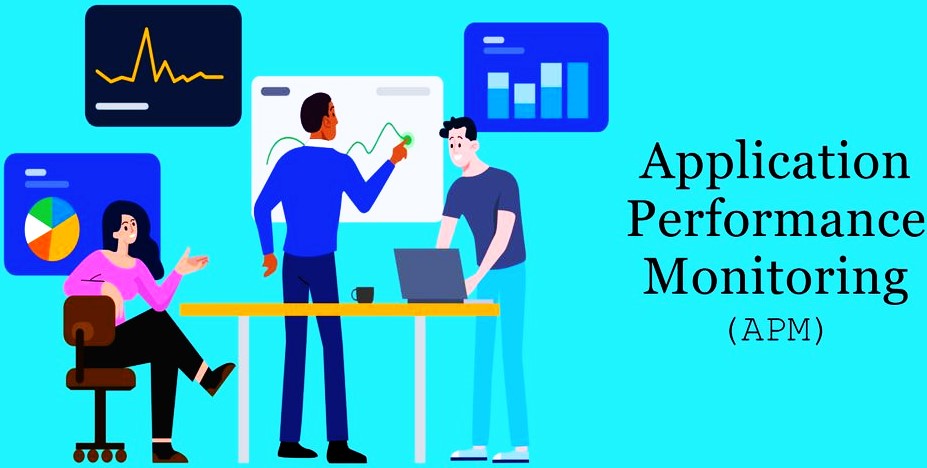Application Performance Monitoring (APM) is an essential practice in today’s digital landscape. It involves tracking and managing the performance and availability of software applications to ensure they function smoothly. With the increasing complexity of modern applications, the role of application performance management has become indispensable.
The rapidly evolving technological landscape means users have high expectations for reliability and performance. When users encounter slow or unreliable applications, their overall experience and satisfaction can plummet. This isn’t just about downtime—extended loading times, laggy interactions, and subpar functionalities can all contribute to a negative user experience. By putting robust APM processes in place, organizations may proactively detect and fix performance issues, improving user satisfaction and increasing application effectiveness.
The Role of APM in Enhancing User Experience
The primary goal of Application Performance Management (APM) is to ensure that applications are performing at their best. This means that monitoring tools track downtime and measure applications’ responsiveness under various conditions. By constantly checking performance metrics, APM tools help businesses maintain a seamless user experience. Monitoring key performance indicators (KPIs) such as response times, error rates, and transaction throughput provides valuable insights into an application’s health, helping businesses prioritize and address critical issues swiftly.
Identifying Performance Bottlenecks
One key benefit of APM is the ability to pinpoint performance bottlenecks. Whether it’s slow database queries, inefficient code, or network issues, APM tools provide insights crucial for optimizing application performance. For instance, detailed monitoring data can help isolate areas where delays occur and enable rapid troubleshooting. Without APM, teams might not have the precise information required to pinpoint the source of a problem, making solving performance issues more like trying to find a needle in a haystack.
Moreover, APM tools often offer visualization capabilities, such as heat maps and performance graphs, that make it easier for teams to spot anomalies and trends. This visual data can be instrumental in diagnosing bottlenecks and implementing targeted optimizations, ensuring that applications remain responsive and users remain satisfied.
Implementing Effective APM Strategies
Integrating APM tools into the development lifecycle can yield significant benefits. Teams can monitor applications in real-time, set performance benchmarks, and receive alerts about potential issues before they impact users. Tools such as New Relic and Dynatrace are popular choices among developers for their comprehensive monitoring capabilities. These solutions are essential for managing high-performance applications because they provide various functions, such as automatic anomaly detection and real-time user monitoring.
Effective APM strategies often involve a combination of proactive and reactive measures. Proactively, teams can use APM data to conduct regular performance reviews and optimize application components. Reactively, APM alerts can ensure that any performance degradation is addressed promptly, minimizing the impact on users. Additionally, integrating APM with other aspects of the DevOps lifecycle, such as continuous integration and continuous deployment (CI/CD), can further enhance the effectiveness of these strategies, leading to more resilient and high-performing applications.
Real-World Examples of APM Benefits
Consider an e-commerce website experiencing slow checkout processes during peak shopping periods. By utilizing APM, the development team could analyze the application’s performance data, identify the source of the slowdown, and implement targeted fixes. This proactive approach enhances user experience and boosts overall sales and customer loyalty. Another example is a financial services application that handles thousands of transactions per minute. With APM, the company can ensure that each transaction is processed efficiently, maintaining the trust and confidence of its users.
Real-world examples like these highlight how essential APM is across various industries. From healthcare applications that manage patient data to streaming services that deliver content to millions, the benefits of APM are widespread. By reducing latency, increasing uptime, and enhancing overall performance, APM tools play a crucial role in helping businesses meet user expectations and achieve their operational goals.
Continuous Improvement Through User Feedback and Performance Data
Combining APM insights with user feedback can drive continuous improvement. Organizations can make data-driven decisions that enhance application performance by listening to user complaints and correlating them with performance metrics. For example, incorporating feedback on website loading times can lead to strategic changes that reduce load times and improve user satisfaction.
APM tools provide the data to understand how users interact with applications and where pain points lie. Pairing this with direct user feedback, such as surveys and support tickets, enables teams to prioritize improvements significantly impacting the user experience. This iterative process of collecting data, analyzing feedback, and implementing changes fosters a culture of continuous improvement, ensuring that applications continue to evolve in line with user needs and expectations.
The Future of APM: Trends and Innovations
The field of APM is continuously evolving, with new trends and innovations on the horizon. Artificial intelligence and machine learning developments pave the way for more advanced monitoring and predictive analytics. According to a recent Gartner report on APM trends, adoption of APM tools is expected to increase significantly, underscoring the growing importance of this practice.
Future trends in APM include integrating AI-driven anomaly detection, which can automatically identify deviations from expected performance patterns and suggest potential fixes. Additionally, the rise of observability platforms, which combine APM with log management and distributed tracing, is set to provide a more holistic view of application performance. These innovations will empower development teams with even deeper insights, enabling them to deliver high-quality user experiences consistently.
Conclusion
In conclusion, Application Performance Monitoring is vital for maintaining high user experience standards in today’s demanding digital landscape. Organizations can ensure their applications run smoothly and efficiently by proactively identifying issues, implementing effective strategies, and continuously improving based on performance data and user feedback. Maintaining a current understanding of APM’s newest developments and trends will be essential for continued success as the field changes.




